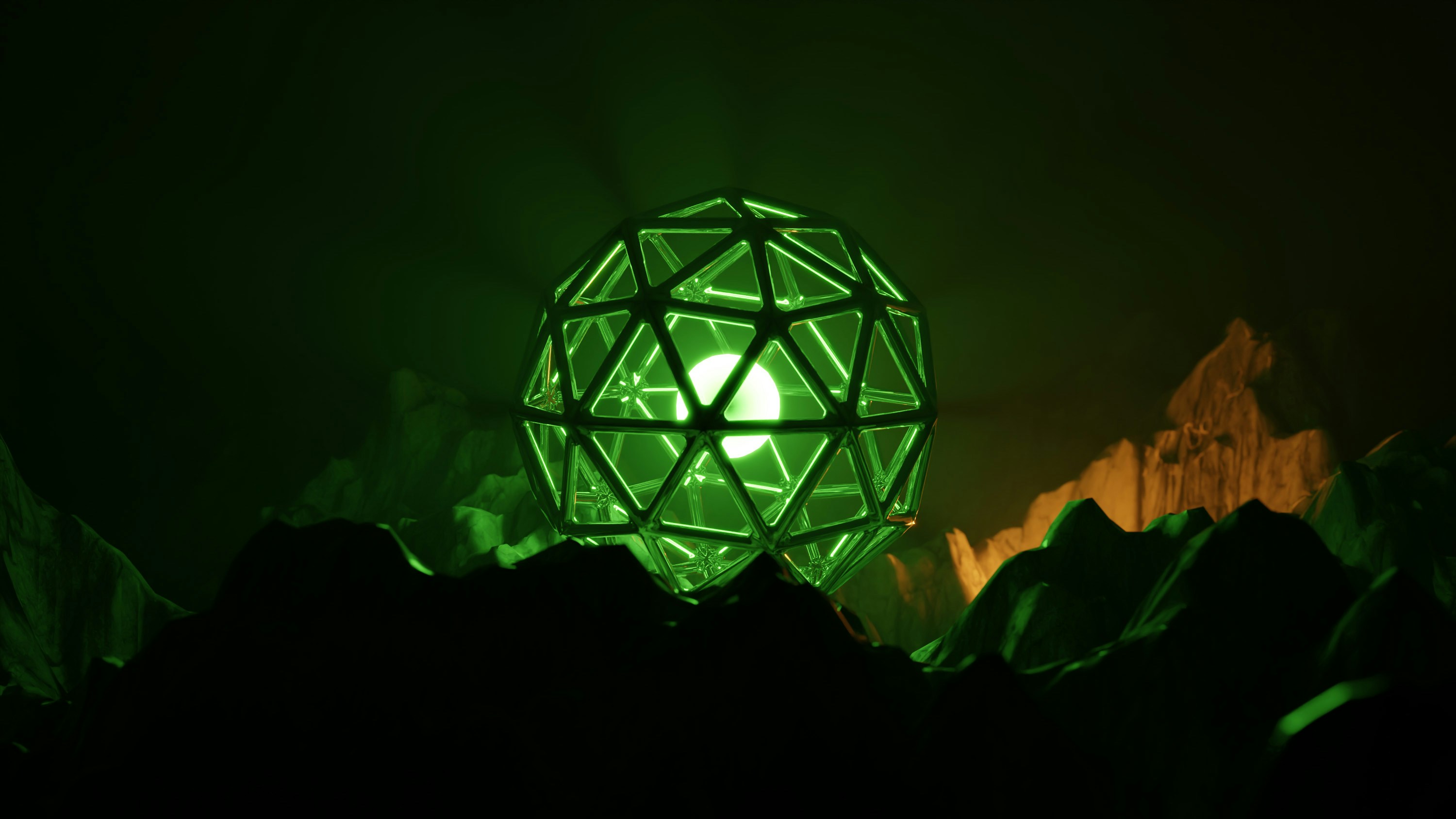











The SciNexic Files
The SciNexic Files
Article


Ranking 25 Species From Popular Space Sci-Fi According to the Kardashev Scale
Rithic P
Apr 3, 2024
Rithic P
Apr 3, 2024
Space sci-fi franchises have introduced us to a vast array of fascinating alien species, each with their own unique characteristics and technological advancements. In this article, we will rank 25 iconic species from popular space sci-fi franchises, including humans, according to the Kardashev Scale. This theoretical framework measures a civilization's level of technological advancement based on its energy consumption. Additionally, we will explore variations of the Kardashev Scale that propose further tiers beyond Type III civilizations.
The Kardashev Scale:
The Kardashev Scale categorizes civilizations into three types based on their energy usage:
Type I: A civilization capable of harnessing and utilizing all the energy available on its home planet.
Type II: A civilization capable of harnessing and utilizing the energy of its entire star or multiple stars within its home galaxy.
Type III: A civilization capable of harnessing and utilizing the energy of an entire galaxy.
Variations of the Kardashev Scale:
Some variations of the Kardashev Scale propose additional tiers, beyond Type III civilizations, to account for even more advanced technological capabilities:
Type IV: A civilization capable of harnessing and utilizing the energy of an entire universe or multiple universes.
Type V: A civilization capable of harnessing and utilizing the energy of multiple universes or a multiverse.
Now, let's rank 25 species from various space sci-fi franchises according to their theoretical placement on the Kardashev Scale, along with a brief description of each:
Type III Civilizations:
1. The Q Continuum (Star Trek): Omnipotent and immortal beings with reality-bending abilities. They possess immense power and knowledge.
Type II Civilizations:
2. The Time Lords (Doctor Who): A highly advanced and ancient race capable of time travel and manipulation of time and space.
3. The Asgard (Stargate SG-1): Advanced extra-terrestrial race that has mastered genetic engineering and possesses highly advanced technology.
4. The Zentradi (Macross/Robotech): Gigantic humanoid warriors with advanced mecha technology and interstellar travel capabilities.
5. The Kree (Marvel Comics): A technologically advanced alien species with a highly developed interstellar empire.
Type I Civilizations:
6. The Klingons (Star Trek): A warrior race known for their honour and military prowess, with warp drive and advanced weaponry.
7. The Vulcans (Star Trek): Highly logical and rational humanoid species with advanced technology, including warp drive.
8. The Goa'uld (Stargate SG-1): Parasitic beings who take over host bodies and possess advanced technology.
9. The Cylons (Battlestar Galactica): Artificial lifeforms created by humans, capable of evolving and developing advanced technology.
10. The Wookies (Star Wars): Tall, furry, and strong species from Kashyyyk, skilled in technology and spaceship piloting.
11. The Protheans (Mass Effect): Ancient and highly advanced species with advanced technology and interstellar travel capabilities.
12. The Narn (Babylon 5): A humanoid species with advanced technology and interstellar travel capabilities.
Pre-Type I Civilizations:
13. The Daleks (Doctor Who): Mutated beings encased in robotic shells, seeking universal domination.
14. The Replicators (Stargate SG-1): Self-replicating nanobots with advanced technology and a focus on replication and assimilation.
Primitive Civilizations:
15. The Ewoks (Star Wars): Primitive, teddy bear-like species living on the forest moon of Endor, with no advanced technology.
16. The Xenomorphs (Alien franchise): Highly adaptable and deadly species with a focus on survival and reproduction.
Unranked Civilizations:
17. The Predators (Predator franchise): Technologically advanced hunters with advanced weaponry and interstellar travel capabilities.
18. The Martians (The War of the Worlds): Highly advanced beings from Mars, with advanced technology including tripods and heat rays.
19. The Na'vi (Avatar): Native humanoid species of the planet Pandora, deeply connected to their natural environment but lacking advanced technology.
Other Civilizations:
20. The Cybermen (Doctor Who): Humanoids who have replaced their organic parts with cybernetic implants. Advanced technology but not on the Kardashev Scale.
21. The Ferengi (Star Trek): Capitalistic species driven by profit with advanced trade and economic systems but not matching a Type I civilization's energy usage.
22. The Trill (Star Trek): A joined species with humanoid hosts and symbiotic slug-like beings. Advanced technology but not on the Kardashev Scale.
23. Humans: Representing ourselves, humans are a diverse species with various levels of technological development.
24. The Wraith (Stargate Atlantis): Feeding on the life force of other beings, the Wraith possess advanced technologies but do not match a Type II civilization's energy consumption.
25. The Martians (The War of the Worlds): Highly advanced beings from Mars, with advanced technology including tripods and heat rays.
Conclusion:
As we ranked 25 iconic species from popular space sci-fi franchises based on the Kardashev Scale, we observed a diverse range of technological advancements and energy consumption. Additionally, we explored variations of the Kardashev Scale that propose further tiers, such as Type IV and Type V civilizations, to account for even more advanced technological capabilities.
The Kardashev Scale allows us to explore the imagined possibilities of civilizations beyond our own and contemplate the technological advancements that may lie ahead. Whether it's the omnipotent Q Continuum of "Star Trek" or the primitive Ewoks of "Star Wars," each species contributes to the rich tapestry of space sci-fi storytelling. Remember, this ranking is meant to inspire discussion and encourage further exploration of the diverse worlds and species within the space sci-fi genre. Enjoy delving into the captivating realms of these iconic franchises, and let your imagination soar to the farthest reaches of the cosmos!
Space sci-fi franchises have introduced us to a vast array of fascinating alien species, each with their own unique characteristics and technological advancements. In this article, we will rank 25 iconic species from popular space sci-fi franchises, including humans, according to the Kardashev Scale. This theoretical framework measures a civilization's level of technological advancement based on its energy consumption. Additionally, we will explore variations of the Kardashev Scale that propose further tiers beyond Type III civilizations.
The Kardashev Scale:
The Kardashev Scale categorizes civilizations into three types based on their energy usage:
Type I: A civilization capable of harnessing and utilizing all the energy available on its home planet.
Type II: A civilization capable of harnessing and utilizing the energy of its entire star or multiple stars within its home galaxy.
Type III: A civilization capable of harnessing and utilizing the energy of an entire galaxy.
Variations of the Kardashev Scale:
Some variations of the Kardashev Scale propose additional tiers, beyond Type III civilizations, to account for even more advanced technological capabilities:
Type IV: A civilization capable of harnessing and utilizing the energy of an entire universe or multiple universes.
Type V: A civilization capable of harnessing and utilizing the energy of multiple universes or a multiverse.
Now, let's rank 25 species from various space sci-fi franchises according to their theoretical placement on the Kardashev Scale, along with a brief description of each:
Type III Civilizations:
1. The Q Continuum (Star Trek): Omnipotent and immortal beings with reality-bending abilities. They possess immense power and knowledge.
Type II Civilizations:
2. The Time Lords (Doctor Who): A highly advanced and ancient race capable of time travel and manipulation of time and space.
3. The Asgard (Stargate SG-1): Advanced extra-terrestrial race that has mastered genetic engineering and possesses highly advanced technology.
4. The Zentradi (Macross/Robotech): Gigantic humanoid warriors with advanced mecha technology and interstellar travel capabilities.
5. The Kree (Marvel Comics): A technologically advanced alien species with a highly developed interstellar empire.
Type I Civilizations:
6. The Klingons (Star Trek): A warrior race known for their honour and military prowess, with warp drive and advanced weaponry.
7. The Vulcans (Star Trek): Highly logical and rational humanoid species with advanced technology, including warp drive.
8. The Goa'uld (Stargate SG-1): Parasitic beings who take over host bodies and possess advanced technology.
9. The Cylons (Battlestar Galactica): Artificial lifeforms created by humans, capable of evolving and developing advanced technology.
10. The Wookies (Star Wars): Tall, furry, and strong species from Kashyyyk, skilled in technology and spaceship piloting.
11. The Protheans (Mass Effect): Ancient and highly advanced species with advanced technology and interstellar travel capabilities.
12. The Narn (Babylon 5): A humanoid species with advanced technology and interstellar travel capabilities.
Pre-Type I Civilizations:
13. The Daleks (Doctor Who): Mutated beings encased in robotic shells, seeking universal domination.
14. The Replicators (Stargate SG-1): Self-replicating nanobots with advanced technology and a focus on replication and assimilation.
Primitive Civilizations:
15. The Ewoks (Star Wars): Primitive, teddy bear-like species living on the forest moon of Endor, with no advanced technology.
16. The Xenomorphs (Alien franchise): Highly adaptable and deadly species with a focus on survival and reproduction.
Unranked Civilizations:
17. The Predators (Predator franchise): Technologically advanced hunters with advanced weaponry and interstellar travel capabilities.
18. The Martians (The War of the Worlds): Highly advanced beings from Mars, with advanced technology including tripods and heat rays.
19. The Na'vi (Avatar): Native humanoid species of the planet Pandora, deeply connected to their natural environment but lacking advanced technology.
Other Civilizations:
20. The Cybermen (Doctor Who): Humanoids who have replaced their organic parts with cybernetic implants. Advanced technology but not on the Kardashev Scale.
21. The Ferengi (Star Trek): Capitalistic species driven by profit with advanced trade and economic systems but not matching a Type I civilization's energy usage.
22. The Trill (Star Trek): A joined species with humanoid hosts and symbiotic slug-like beings. Advanced technology but not on the Kardashev Scale.
23. Humans: Representing ourselves, humans are a diverse species with various levels of technological development.
24. The Wraith (Stargate Atlantis): Feeding on the life force of other beings, the Wraith possess advanced technologies but do not match a Type II civilization's energy consumption.
25. The Martians (The War of the Worlds): Highly advanced beings from Mars, with advanced technology including tripods and heat rays.
Conclusion:
As we ranked 25 iconic species from popular space sci-fi franchises based on the Kardashev Scale, we observed a diverse range of technological advancements and energy consumption. Additionally, we explored variations of the Kardashev Scale that propose further tiers, such as Type IV and Type V civilizations, to account for even more advanced technological capabilities.
The Kardashev Scale allows us to explore the imagined possibilities of civilizations beyond our own and contemplate the technological advancements that may lie ahead. Whether it's the omnipotent Q Continuum of "Star Trek" or the primitive Ewoks of "Star Wars," each species contributes to the rich tapestry of space sci-fi storytelling. Remember, this ranking is meant to inspire discussion and encourage further exploration of the diverse worlds and species within the space sci-fi genre. Enjoy delving into the captivating realms of these iconic franchises, and let your imagination soar to the farthest reaches of the cosmos!
Comments
Please be kind and considerate. Any abusive or offensive comments will be sent out the airlock! Thank You.
Please be kind and considerate. Any abusive or offensive comments will be sent out the airlock! Thank You.
Please be kind and considerate. Any abusive or offensive comments will be sent out the airlock! Thank You.


